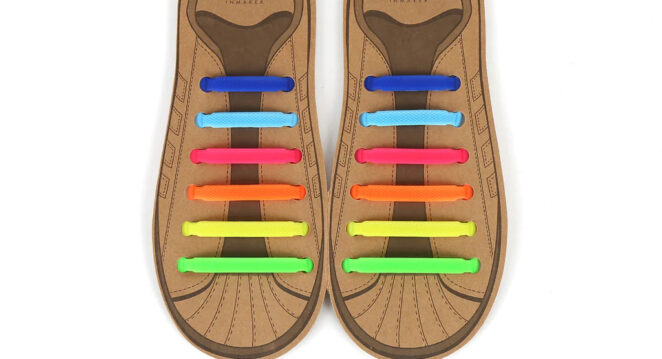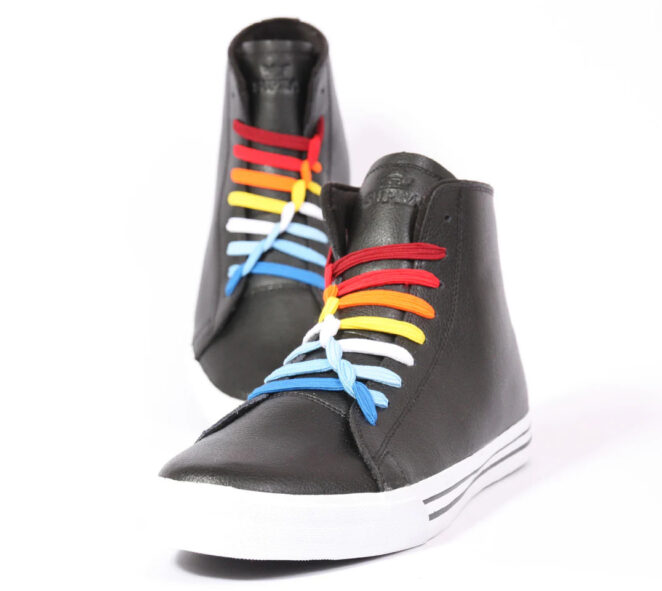Shoelaces: we all know them, and most of us use them every day. But a new era in footwear is upon us, one that potentially redefines the way we secure our shoes. This intriguing innovation, known as no-tie laces, has caught the attention of the masses. Are these laces a passing trend or a significant step in the evolution of footwear? Our comprehensive analysis aims to unravel this mystery.
How Does It Work?
A subtle yet revolutionary concept, no-tie laces function through a combination of unique components that work together to secure a shoe. By utilizing elastic cords and an adjustable tension system, no-tie elastic shoelaces provide a firm hold without needing to be tied. The cords typically thread through the eyelets of a shoe just like traditional laces, but a locking mechanism at the ends secures them in place. As a result, users can slip their shoes on and off with ease.
Adjusting the tension to your liking is a breeze, and once set, it ensures a consistent fit every time you wear your shoes. This technology has implications beyond mere convenience; it can be a life-changer for those with physical challenges. It eliminates the often tedious process of tying and untying, replacing it with a simple click or toggle, making footwear more accessible to a broader range of people.
Advantages of No-Tie Laces

The benefits of these innovative laces extend far beyond simple time-saving. They offer an impressive level of customization, allowing users to achieve the perfect fit. This personalized comfort could lead to a decrease in foot fatigue, particularly for those who are on their feet for long hours. From athletes to office workers, the appeal is widespread. Even for those with physical limitations or disabilities.
Despite their seemingly simple design, these laces offer a secure fit that rivals traditional counterparts. It’s not just about convenience; it’s about efficiency and practicality. For active individuals or those who frequently move between different environments, no-ties can be a game-changer, providing consistent support without constant adjustment.
Drawbacks of No-Tie Laces
While the benefits are evident, there are some potential downsides to consider. For instance, no-tie laces might not provide the same level of security in all types of footwear. Athletic shoes or heavy boots may require a sturdier lace to maintain support and stability. These non-traditional options may not suit every style or activity.
On the financial side, no-tie laces often carry a higher price tag than their traditional counterparts. This investment might seem insignificant to some, but for families on a budget or individuals who wear multiple pairs of laced shoes, the costs can add up. It’s essential to weigh these factors against the convenience and customizability they offer.
Durability and Longevity

The question of how long these innovative laces will last is an essential consideration. Though often made with strong elastic materials, these components can wear down over time. Constant stretching and contracting might lead to fraying or weakening, affecting both functionality and appearance.
Despite potential wear and tear, many manufacturers have taken steps to ensure longevity. By incorporating high-quality materials and smart design, they strive to create a product that will endure daily use. Quality no-ties can indeed last as long as traditional ones, but they may vary from brand to brand.
Comfort and Fit
In evaluating comfort, no-tie laces generally outshine their traditional counterparts. The ability to adjust tension allows for a personalized fit that can adapt to various foot shapes and sizes. This versatility promotes not only comfort but also healthier foot support.
Yet, this system isn’t foolproof. An improper fit or malfunctioning lock could cause discomfort or even harm. Understanding how to correctly adjust and secure the laces is paramount. Consumers must also recognize that no two brands are identical, and the comfort level may vary between products.
Aesthetics and Style

From a stylistic standpoint, no-ties present an intriguing option for fashion enthusiasts. The sleek appearance and various color options can complement or enhance the overall look of shoes. The absence of a traditional bow adds a minimalist touch that many modern fashionistas appreciate.
Purists might argue that traditional laces offer an aesthetic appeal that can’t be replicated. The timeless look of tied bows is synonymous with certain types of footwear, like classic leather oxfords or vintage sneakers. In some circles, the absence of traditional lacing could be seen as a loss rather than an advancement.
Comparison with Traditional Types
When juxtaposed with their conventional counterparts, no-tie laces offer an appealing alternative. Their convenience, adaptability, and modern design often place them a step ahead of many users. The time saved and the comfort gained can be persuasive arguments for their adoption.
Traditional laces aren’t going away any time soon. They remain an affordable, versatile, and beloved part of our footwear culture. They can be easily replaced, come in various styles, and have a familiarity that keeps them relevant. In some cases, they might even provide a more secure fit, depending on the shoe type and user’s needs.
Popular Brands and Products
A growing number of brands are diving into the world of no-tie laces, each offering unique takes on the concept. Some well-known players like Hickies and Lock Laces have become synonymous with this movement, offering quality products that have garnered praise for both functionality and style.
But it’s not just the big names that deserve attention; many smaller, innovative companies are entering the market. Consumers looking to explore this realm will find a broad spectrum of options to suit various tastes and budgets. Investing time in researching and reading reviews will help uncover the best fit for individual preferences and needs.
Final Thoughts
Are no-tie laces worth the attention they’ve garnered? The answer, it seems, lies in personal preference, need, and style considerations. For those seeking convenience, personalization, and a touch of modern flair, these innovative laces present a compelling option. Yet, for purists or those who prioritize cost, traditional laces may remain the preferred choice.
As with many innovations, the true value of no-tie laces will be determined by the individual user. What remains clear, however, is that they’ve added an exciting chapter to the ever-evolving story of footwear, offering a fresh perspective on something as simple and essential as lacing up our shoes.



